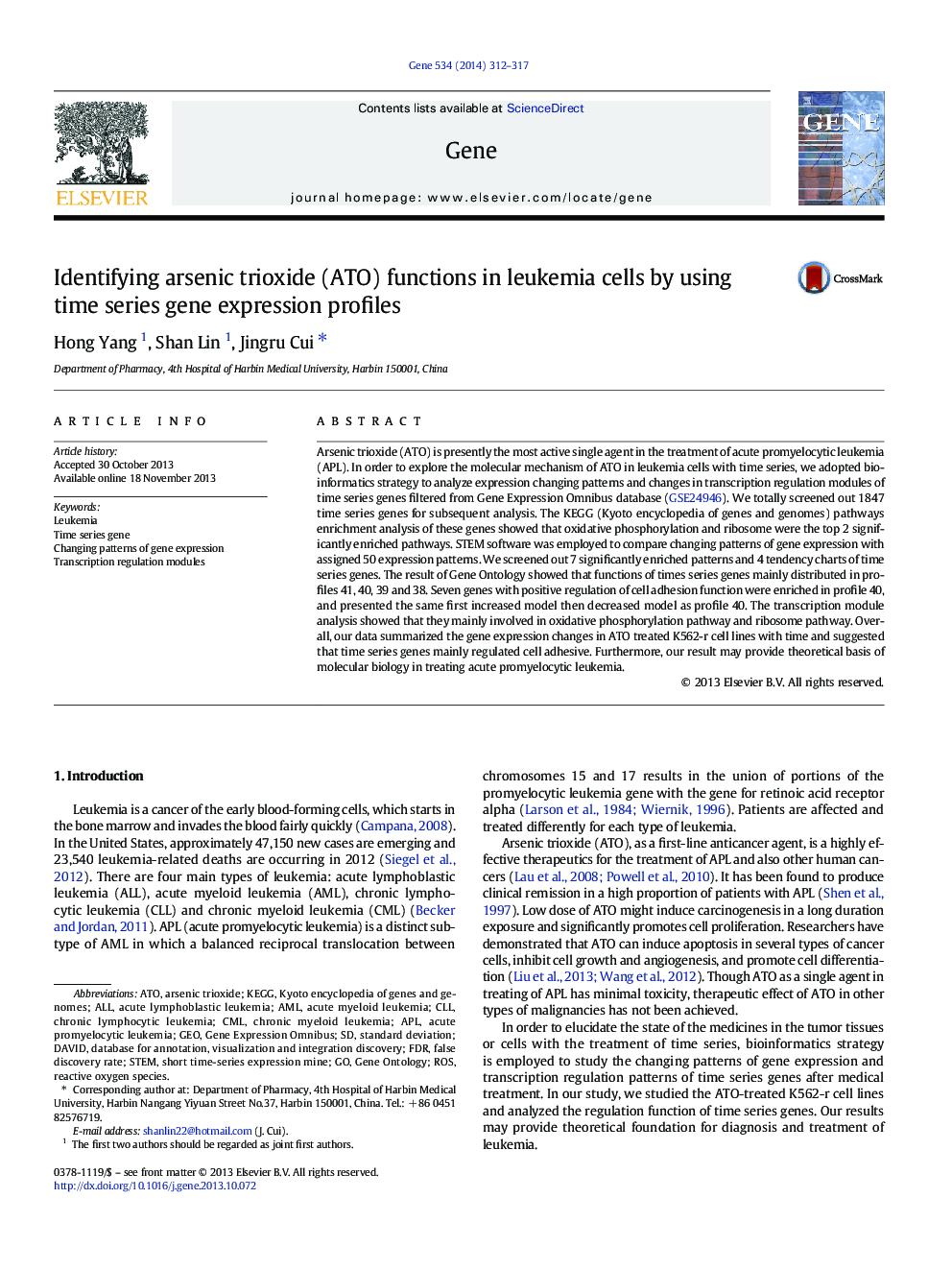| کد مقاله | کد نشریه | سال انتشار | مقاله انگلیسی | نسخه تمام متن |
|---|---|---|---|---|
| 5905961 | 1159943 | 2014 | 6 صفحه PDF | دانلود رایگان |

• We screened time series genes of Arsenic trioxide treated leukemia cells.
• We conducted KEGG pathways annotation of the selected time series genes.
• Significant expression changing patterns and the changing tendency were analyzed.
• The transcription regulation modules and the enriched functions were analyzed.
Arsenic trioxide (ATO) is presently the most active single agent in the treatment of acute promyelocytic leukemia (APL). In order to explore the molecular mechanism of ATO in leukemia cells with time series, we adopted bioinformatics strategy to analyze expression changing patterns and changes in transcription regulation modules of time series genes filtered from Gene Expression Omnibus database (GSE24946). We totally screened out 1847 time series genes for subsequent analysis. The KEGG (Kyoto encyclopedia of genes and genomes) pathways enrichment analysis of these genes showed that oxidative phosphorylation and ribosome were the top 2 significantly enriched pathways. STEM software was employed to compare changing patterns of gene expression with assigned 50 expression patterns. We screened out 7 significantly enriched patterns and 4 tendency charts of time series genes. The result of Gene Ontology showed that functions of times series genes mainly distributed in profiles 41, 40, 39 and 38. Seven genes with positive regulation of cell adhesion function were enriched in profile 40, and presented the same first increased model then decreased model as profile 40. The transcription module analysis showed that they mainly involved in oxidative phosphorylation pathway and ribosome pathway. Overall, our data summarized the gene expression changes in ATO treated K562-r cell lines with time and suggested that time series genes mainly regulated cell adhesive. Furthermore, our result may provide theoretical basis of molecular biology in treating acute promyelocytic leukemia.
Journal: Gene - Volume 535, Issue 2, 10 February 2014, Pages 312–317